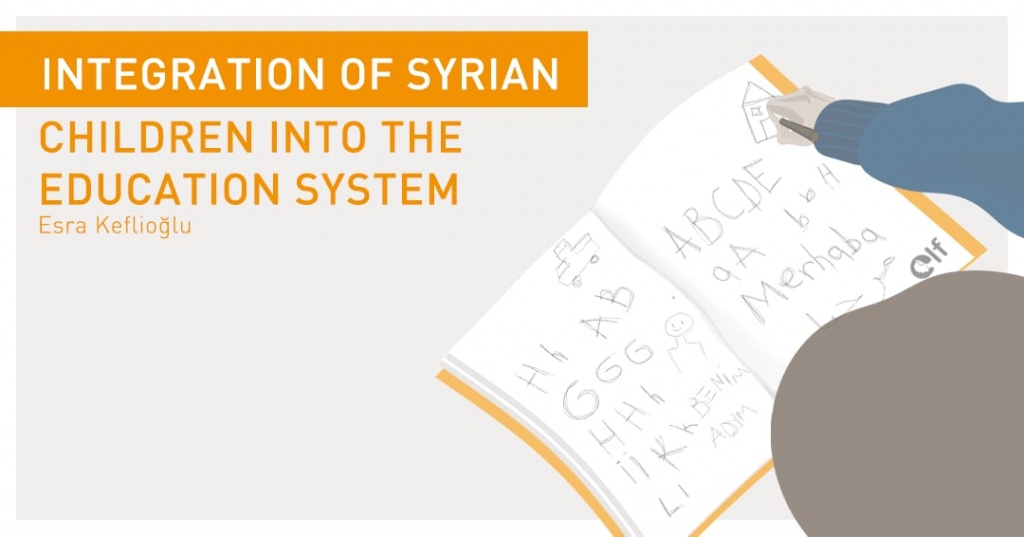Turkey, as a country at the heart of the migration movement, has been heavily affected by the civil war in Syria that started in March 2011. Due to its location in critical geography and its acceptance of immigrants, it has attracted migration mobility and has become the focal point of Syrian migration. Turkey’s contact with Syrian forced migration brought new issues and processes, concordantly, the integration of Syrian refugees in Turkey has also become an important issue.
The main purpose of the integration of Syrians, under the statute of temporary protection in Turkey, is to adapt them into the society and to enable them to continue their lives. A successful integration, in this context, covers strengthening the social bond between the people in receiving country and the immigrant, educational processes of Syrian students, their activity in the labor market in Turkey, and more. About the integration of Syrians, it is necessary to have a holistic view to address the issues such as cultural integration, integration into education, or the labor market. However, the integration of the Syrian students in Turkey into the Turkish education system is more crucial than all these areas because this covers language learning, getting involved in social life, communicating easily, and acting independently.
In this context, we can clearly say that the biggest problem in terms of the integration of Syrian children is the language problem. Due to this problem, the students cannot understand sufficiently the medium of instructions. Then, the students, who cannot participate in the events with their classmates, cannot adapt themselves to the educational environment. All these problems cause students not to have strong communication in the classroom, and them to lag behind their classmates in the education process. Therefore, speaking Turkish effectively is the most important factor for the integration of Syrian immigrants in general and their integration to education in particular.
In addition to the language barrier, there are various obstacles in terms of Syrian students’ access to education. In this case, these obstacles make it difficult for them to adapt to the Turkish education system. The main difficulty encountered by Syrian children in the process of access to education is that the child had to involve in working life to contribute to their family budget. The difficulties faced by Syrian immigrants in the labor market and heavy work conditions (low salary, long working hours, etc.) have caused Syrian children to get a start in working life at a young age, in other words – child labor. This situation reduces Syrian immigrants’ educational level and negatively affects their integration into education.
Another important factor that makes it for Syrian children to access education is the lack of knowledge of Syrian families about schooling and their rights. Syrian families don’t have enough information about school records, and they experience several difficulties. All these cause the children of school age not to be involved in educational life. This situation shows us that, for achieving a successful integration process, it’s necessary to explain transparently the antecedent right belonging to Syrian children in Turkey.
In conclusion, the integration of Syrian immigrants, who migrated to Turkey as part of forced migration, into education is crucial to access many different competencies, ranging from living by having enough Turkish knowledge without the need of another person, to properly learning about their rights and obligations, to adapt to the citizens of the host country, or range from reducing the proportion of Syrian population working in the informal sector, to ameliorate the working conditions.
BIBLIOGRAPHY
- Çerçi, A. &Canalıcı, M. (2019). GeçiciKorumaKapsamındakiSuriyeliÖğrencilerinTürkEğitimSistemineEntegrasyonSürecindeYaşadığıİletişimSorunları. Gaziantep ÜniversitesiEğitimBilimleriDergisi, 3(1). (Turkish)
- Esen, S. (2020). SuriyeliÇocuklarınTürkEğitimSistemineEntegrasyonu (Uyumu) ve YaşananSorunlar (Konya İli Örneği) (Yayınlanmamışyükseklisanstezi). Necmettin Erbakan ÜniversitesiEğitimBilimleriEnstitüsü, Konya. (Turkish)
- Özgüzel, S. (Ed.). (2019). Türkiye’deSığınmacıÇocuklarınEğitimi ve Entegrasyonu. Ankara: EğitimYöneticileri ve UzmanlarıDerneğiYayınları. (Turkish)
- Şahin, H. (2020). GöçOlgusu, MülteciÇocuklarınEğitimi ve SuriyeliMülteciÇocuklarınTürkEğitimSistemineEntegrasyonuSüreci. UluslararasıTürkçeEdebiyatKültürEğitimDergisi, 9(1), 377-394. (Turkish)
- Şimşek, D. (2019). Türkiye’deSuriyeliÇocuklarınEğitimeErişimi: Engeller ve Öneriler. EğitimBilimToplumDergisi, 17(65), 10-32. (Turkish)
Translation: Ahmet Pehlivan

